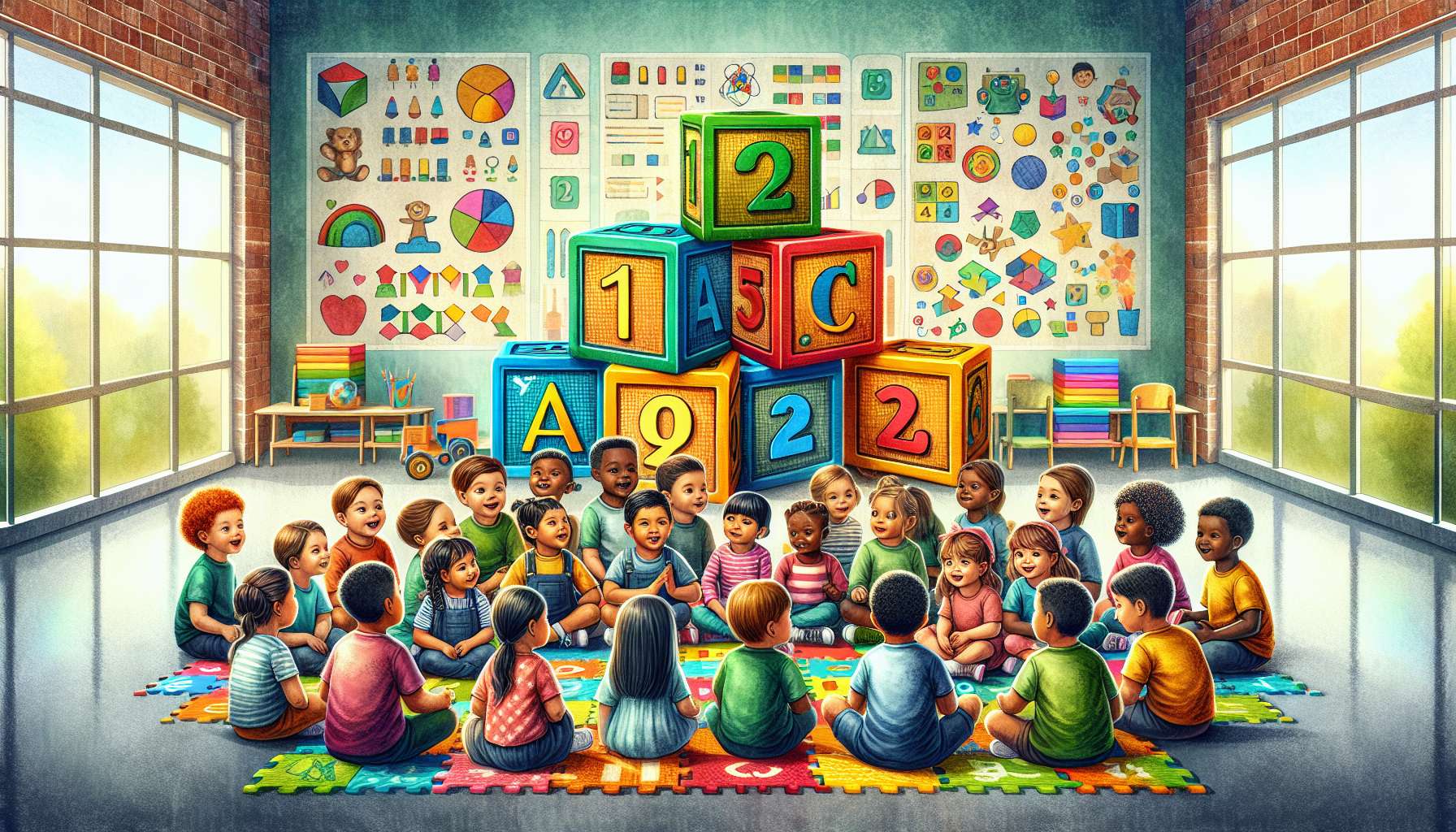Educational Essentials: A Comprehensive Guide
Education is the cornerstone of society, shaping minds, molding characters, and paving the way for a brighter future. But what are the essential components that make education effective, impactful, and transformative? In this comprehensive guide, we delve into the realm of ‘Educational Essentials’ to uncover the fundamental building blocks that underpin successful learning experiences. From traditional methods to innovative approaches, from theory to practice, we explore the multifaceted world of education and the essentials that drive its evolution.
The Foundation of Learning
At the core of education lies the foundation of learning. Whether in a classroom setting, online environment, or informal learning space, the essentials of education revolve around creating a conducive atmosphere for knowledge acquisition, skill development, and personal growth. The key components of this foundation include:
Curriculum Design
The curriculum serves as the roadmap for learning, outlining the objectives, content, and assessments that guide educational experiences. A well-designed curriculum aligns with learning goals, engages students, and promotes mastery of essential skills and knowledge.
For example, in a STEM-focused curriculum, students may engage in hands-on experiments, collaborative projects, and real-world applications to deepen their understanding of science, technology, engineering, and math concepts. By incorporating interactive elements, incorporating relevant content, and fostering critical thinking skills, the curriculum becomes a powerful tool for driving educational outcomes.
Effective Instruction
Instructional strategies play a crucial role in delivering content, engaging students, and promoting active learning. From lectures to discussions, group work to individual projects, educators must employ a variety of techniques to cater to diverse learning styles, abilities, and interests.
For instance, a teacher may use a flipped classroom model to encourage self-directed learning, where students watch instructional videos at home and engage in hands-on activities during class time. This approach flips the traditional paradigm of teaching, allowing students to explore concepts independently and apply their knowledge collaboratively.
Educational Technology
Technology has revolutionized the educational landscape, offering new tools, platforms, and resources to enhance teaching and learning. From interactive whiteboards to online learning management systems, educational technology enables educators to create dynamic, engaging, and personalized learning experiences for students.
For example, a teacher may use virtual reality simulations to immerse students in historical events, scientific phenomena, or cultural landmarks, allowing them to explore, interact, and learn in a virtual environment. By leveraging technology, educators can spark curiosity, foster creativity, and empower students to become active participants in their own learning journey.
Assessment and Feedback
Assessment and feedback are essential components of the educational process, providing valuable insights into student progress, understanding, and mastery of content. By evaluating student performance, providing timely feedback, and adjusting instructional strategies, educators can support student learning and promote growth.
Formative Assessment
Formative assessment involves ongoing, informal assessments that gauge student understanding, identify misconceptions, and guide instruction. By using quizzes, discussions, projects, and other formative assessment methods, educators can monitor student progress, provide immediate feedback, and adjust teaching strategies to meet student needs.
For example, a teacher may use exit tickets to assess student learning at the end of a lesson, asking students to summarize key concepts, ask questions, or reflect on their understanding. By collecting and analyzing this feedback, educators can tailor their instruction, address student concerns, and promote deeper learning.
Summative Assessment
Summative assessment involves formal, end-of-unit or end-of-course assessments that evaluate student learning outcomes and mastery of content. By using tests, quizzes, projects, and exams, educators can measure student achievement, assign grades, and provide feedback on overall performance.
For example, a teacher may administer a final exam at the end of a semester to assess student knowledge, skills, and abilities in a particular subject area. By analyzing student performance on this summative assessment, educators can identify areas of strength and weakness, inform instructional planning, and support student growth.
Support Services
Support services are essential components of education that provide students with the resources, assistance, and guidance they need to succeed academically, emotionally, and socially. From counseling services to academic support programs, from special education services to language support, support services play a vital role in fostering student success.
Counseling and Mental Health Services
Counseling and mental health services offer students access to trained professionals who provide emotional support, guidance, and resources to help them navigate personal, academic, and social challenges. By offering individual counseling, group therapy, crisis intervention, and other services, schools can promote student well-being and resilience.
For example, a school counselor may work with students to address anxiety, stress, depression, or other mental health concerns that impact their academic performance and overall well-being. By providing a safe, confidential space for students to express their feelings, learn coping strategies, and access community resources, counselors can empower students to overcome obstacles and thrive in school.
Academic Support Programs
Academic support programs offer students additional academic assistance, remediation, and enrichment opportunities to help them succeed in their coursework and achieve their educational goals. By providing tutoring, study skills workshops, homework help, and other services, schools can support students at all levels of learning.
For example, a school may offer a peer tutoring program where older students mentor younger students, providing academic support, guidance, and encouragement in a particular subject area. By fostering peer-to-peer learning, collaboration, and mentorship, schools can create a supportive learning community that empowers students to help each other succeed.
Professional Development
Professional development is a critical component of education that enables educators to stay current, informed, and effective in their teaching practices. By engaging in ongoing training, workshops, conferences, and collaborative learning opportunities, educators can enhance their knowledge, skills, and instructional strategies to better serve their students.
Continuing Education
Continuing education programs provide educators with opportunities to deepen their expertise in a particular subject area, explore new teaching methods, and stay abreast of the latest research and trends in education. By attending conferences, webinars, courses, and other professional development activities, educators can expand their knowledge base, network with colleagues, and grow professionally.
For example, a teacher may attend a workshop on project-based learning to explore innovative instructional strategies, develop new lesson plans, and engage students in authentic, hands-on learning experiences. By incorporating project-based learning into their teaching practice, educators can foster creativity, collaboration, and critical thinking skills in their students.
Collaborative Learning Communities
Collaborative learning communities bring together educators from diverse backgrounds, disciplines, and settings to share best practices, exchange ideas, and support one another in their professional growth. By participating in collaborative learning communities, educators can collaborate on projects, discuss challenges, and brainstorm solutions to improve teaching and learning.
For example, a group of teachers may form a professional learning community to explore innovative teaching strategies, analyze student data, and reflect on their instructional practices. By working collaboratively, sharing resources, and providing feedback to one another, educators can enhance their teaching effectiveness, student engagement, and overall professional satisfaction.
Parent and Community Involvement
Parent and community involvement are essential components of education that foster partnerships, collaboration, and support for student learning. By engaging parents, families, and community members in the educational process, schools can create a culture of shared responsibility, mutual respect, and collective action to promote student success.
Parent Engagement
Parent engagement initiatives involve parents in their child’s education, encourage communication between home and school, and empower parents to support their child’s academic and personal development. By offering parent-teacher conferences, workshops, family events, and other opportunities for involvement, schools can build trust, strengthen relationships, and enhance student outcomes.
For example, a school may host a family literacy night where parents and children participate in reading activities, storytelling, and book discussions to promote a love of reading and literacy skills. By engaging families in interactive, educational experiences, schools can reinforce the importance of learning at home and create a supportive environment for student success.
Community Partnerships
Community partnerships connect schools with local organizations, businesses, and agencies to provide students with additional resources, opportunities, and support. By collaborating with community partners, schools can offer internships, mentorship programs, career exploration activities, and other enrichment experiences that enhance student learning and preparation for the future.
For example, a school may partner with a local museum to offer a field trip for students to explore exhibits, engage in hands-on activities, and learn about history, science, or art in a real-world context. By leveraging community partnerships, schools can extend the learning beyond the classroom, expose students to new experiences, and broaden their understanding of the world around them.
Conclusion
To wrap things up, ‘Educational Essentials’ encompass a wide range of components that are vital for creating meaningful, engaging, and effective learning experiences. From curriculum design to instructional strategies, assessment and feedback to support services, professional development to parent and community involvement, the essentials of education form the bedrock of student success, teacher effectiveness, and school improvement.
By focusing on these essential components, educators can create learning environments that foster critical thinking, creativity, collaboration, and communication skills in students, preparing them for success in school, work, and life. As we continue to explore and innovate in the field of education, it is essential to recognize, prioritize, and integrate these educational essentials into our practice to ensure the best possible outcomes for all learners.




